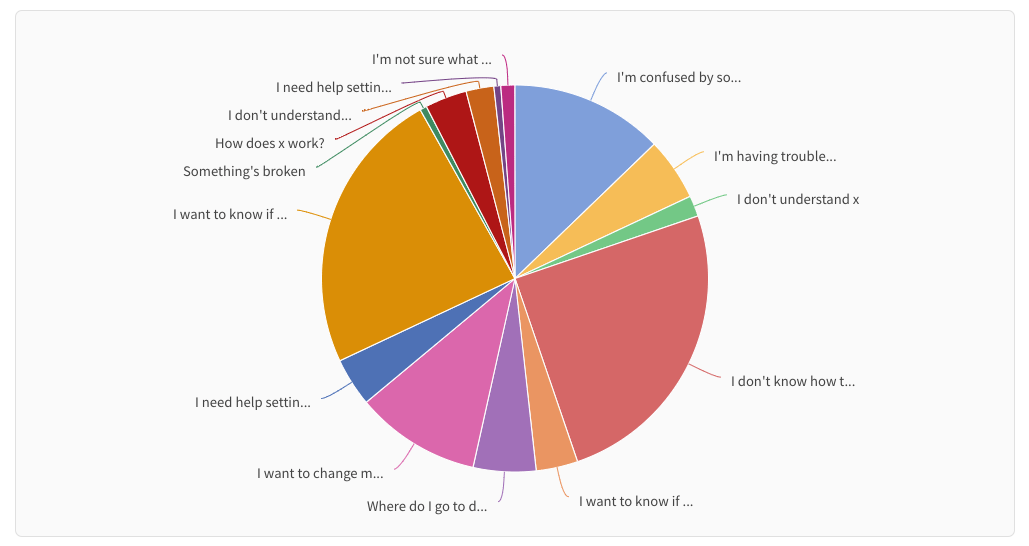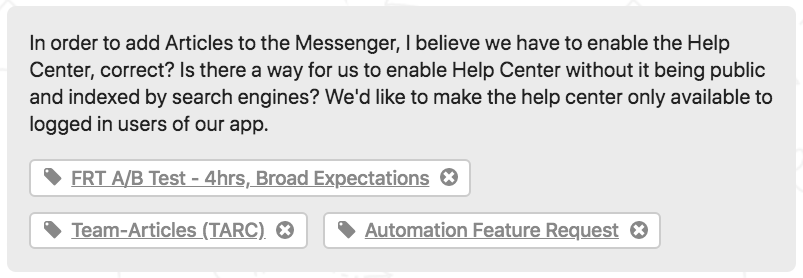
Why sales and marketing are the key to your roadmap success
Main illustration: Kelly Carpenter
Product managers have the onus to be deeply attentive listeners. We’ve got to keep a pulse on a diverse set of inputs, filtering signals amidst the noise, to build strategic direction and seemingly mid-flight, make calculated tradeoffs for the product roadmap.
It’s a game of endless Bayesian inference with an overwhelming amount of directions. We are constantly reevaluating if the choices we’ve made for the product are the right ones as new information becomes available.
Sales and marketing teams are one of the most valuable sources of inputs into the roadmap. They are on the front line and have a strong, raw insight into customers, market trends and product.
As our co-founder Des Traynor once wrote, “If your product team isn’t taking roadmap input from your sales team, you’re not listening to the potential market. You can go deeper in your current niche, but you’ll never expand out of it, nor will you move upmarket.”
The value of sales and marketing input into your roadmap
A classic narrative for product teams is that sales is reactively pushing for anything that will sell while marketing is pushing for anything that’s new and shiny. Product teams need to park these predisposed beliefs, align with their sales and marketing teams on an underlying mission and leverage each other’s strengths.
“Your business is so much more than the code you ship and your sales and marketing teams understand that better than anyone else”
Sales and marketing teams are talking to customers and prospects on a daily basis – far more than any product manager could reasonably do. This means that they know things that should never be taken for granted. Your business is so much more than the code you ship and your sales and marketing teams understand that better than anyone else.
Here’s a snapshot of some insights you can learn from them:
Your customer
- Demographics: They know the various segments and personas, associated value props and the “aha” moments. For instance, our marketing team drove product packaging research and surfaced the need for a Marketo integration and revenue reporting for our Premium tier customers.
- Positioning: They know what messaging resonates with your customers and the language your current and prospective customers are using to discuss their problems.
Your product
- Onboarding: They deeply understand the onboarding experience of the product because they’re experiencing it every week (if not every day). For instance, our Sales team surfaced major onboarding pains with Intercom’s Salesforce integration and we prioritized it as a result.
- Practical depth: They’ve got a deep understanding of where your product wins and where it doesn’t. They can surface what you don’t have and what you really should have. For example, we updated our emoji for conversation ratings from 😍 to 🤩 based on subtle feedback we received from these teams.
- Product peripheries: They know the time cost of adopting your product, what the buying and decision process looks like and how your product fits in with the existing tech stack your customers already have.
Your market
- Trends: They are able to cut through noise and establish what trends are here to stay. For example, we learned that Account Based Marketing (ABM) is not just another marketing trend, but a fundamental shift in how businesses approach their customers. This is why we’ve invested heavily to empower an ABM approach and built something deeply customized for this workflow.
- Competition: They know who you’re getting compared to on a daily basis and how this comparison is evolving. They know why customers choose you over your competitors and vice versa.
Tapping into sales and marketing insights
So how does a product team tap into the pool of insights in the sales and marketing sphere? Good product managers are able to reactively digest sales and marketing feedback and feed that into their roadmap. Great product managers proactively build a partnership with their sales and marketing team and empower them to feed into the roadmap.
Put the tools to use
Naturally, you need to first start at a high level and understand the general go-to-market strategy – from target market to buyer to channel strategy. However, there’s a world of tangible, raw insights living in the tools that your sales and marketing teams use that often goes untapped. Look closely and you’ll see a profusion of insights you can act on immediately.
“Great product managers proactively build a partnership with their sales and marketing team and empower them to feed into the roadmap”
Analyze conversations in Intercom that customers have with their account managers a few months prior to churning. Evaluate closed won and lost deals in Salesforce and extract key insights from sales notes. Study how email threads pan out in Salesloft (our sales engagement tool) and what kind of language and value proposition peaks interest the most.
For example, we recently studied conversations in Intercom with trialing prospects, and extracted both the key things that new prospects want from our product and the main sources of product confusion.

There’s no need to start from scratch here. Dissect the data based on your prior beliefs and thoughts on where the product should be heading. For example, if there’s a push to go upmarket and focus on larger, more sophisticated customers, double down on these deals in Salesforce. Look at cases that added friction for these customers or missing functionality that blocked them altogether.
A strong, necessary (and somewhat obvious) caveat here is that it’s dangerously easy to misuse these insights. Don’t make assumptions based on a handful of customers. Don’t build functionality to unblock a few high value deals (unless of course it makes strategic sense to). Dive deeper into the world of sales and marketing, but don’t get sucked into constant, direct revenue impact. Have a bungee cord attached to pull you back to the product sphere.
Relationships are key
Of course, diving into the tools yourself is only reactively scratching the surface. The easiest way to kickstart a more proactive relationship is by establishing a workflow for sharing insights. This could be as simple as making sure all feature requests are tagged, which is something we make great use of at Intercom.
We also have a dedicated channel on Slack where our sales and marketing teams can share feedback directly, and new deals won or lost get automatically posted. Check out integrations like Troops.ai or Slackspot.
More broadly, it’s important that these teams are aligned on the company goals and have a sense of empathy with one another. But what does this look like in reality?
This looks like your sales and marketing teams knowing to ask “why” when they are talking to customers and understanding the value in that simple question. For example, rather than surfacing a feature request and probing on the underlying customer problems in another session, your sales and marketing teams should be encouraged to do so themselves there and then.
“Dive deep into the world of sales and marketing, but don’t get sucked into constant, direct revenue impact. Have a bungee cord attached to pull you back to the product sphere”
At Intercom, we’ve worked hard to build and maintain strong relationships between our product managers and our sales and marketing teams through collaboration and education. One of the ways we have done this is through running sales and marketing days together where everyone has an opportunity to speak to customers and do some outreach.
We have found that this helps to build customer empathy and there’s a two-fold benefit as you also build empathy for teammates and their style of thinking.
Recipe for success
All of the information gathered and contextualized by your sales and marketing teams in collaboration with product managers is what will give you the ingredients you need to create a recipe for an accurately prioritized roadmap and product success.
Prioritization is arguably the hardest and most valuable responsibility of a product manager. By aligning with your sales and marketing team, empowering them with a clear process to collaborate and then leveraging this resource, your roadmap will be incredibly informed. After all, it’s not just about what’s on the roadmap, it’s also about understanding and sharing why they are there.









